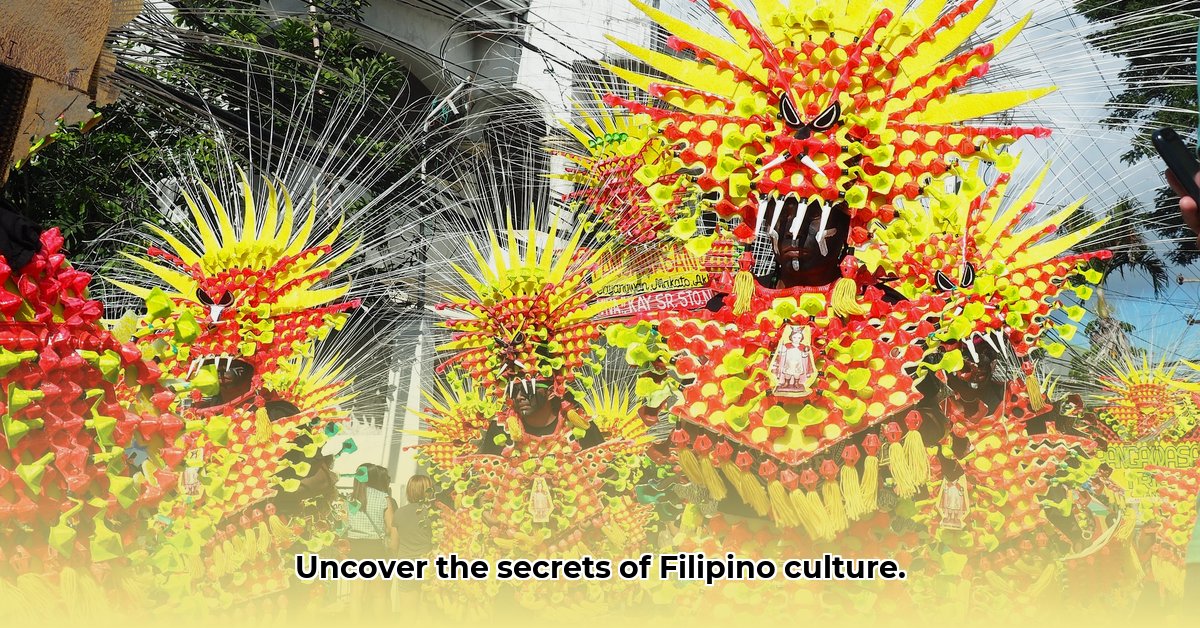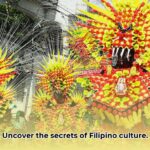The Philippines, an archipelago of over 7,000 islands, pulsates with a vibrant culture woven from indigenous traditions, colonial influences, and the dynamism of modern life. This article delves into the heart of Filipino culture, exploring the profound importance of family, the captivating spectacle of festivals, the rich tapestry of artistic expressions, and the diverse culinary landscape. For deeper insights into Filipino symbolism, see this article on nature’s symbolism. Embark on a journey to discover the essence of Filipino identity and the enduring spirit of its people.
The Tapestry of Family and Social Harmony: Pillars of Filipino Identity
Family serves as the bedrock of Filipino society, a dynamic network extending far beyond the immediate household. This interconnectedness shapes social interactions and gives rise to fundamental cultural values. Bayanihan, the spirit of communal unity and cooperation, exemplifies Filipino collectivism. Neighbors readily assist one another, whether in times of celebration or hardship, demonstrating the strength of their bonds. This tradition persists in modern society through community service initiatives and volunteerism, adapting to the evolving needs of the community while retaining its core principle of mutual support.
Pakikisama, the art of maintaining smooth interpersonal relationships, emphasizes harmony and avoids conflict. This cultural value encourages individuals to prioritize the needs of the group over personal desires, fostering a sense of belonging and shared responsibility. Hiya, often translated as shame or self-respect, influences behavior and decision-making. Individuals strive to avoid actions that could bring dishonor to themselves or their families, promoting a culture of courtesy and consideration. Pagmamano, the gesture of respectfully pressing one’s forehead to an elder’s hand, embodies reverence for elders and the importance of familial hierarchy. Open communication, tempered with sensitivity to hiya, plays a vital role in navigating social interactions with grace and respect.
A Kaleidoscope of Festivals: Celebrating Faith, Heritage, and Community
Filipino festivals paint the islands with vibrant colors, music, and dance, offering a glimpse into the rich tapestry of cultural and religious traditions. These elaborate celebrations, often spanning days or weeks, showcase the unique customs of each region. Sinulog, the grandest festival in Cebu, honors the Santo Niño (Child Jesus) with a dazzling display of street dancing, colorful costumes, and fervent religious devotion. The energy that fuels these celebrations stems from a profound sense of shared faith, cultural pride, and the joy of communal gathering.
Panagbenga, the flower festival of Baguio City, transforms the mountain city into a breathtaking spectacle of giant flower floats, showcasing the artistry and ingenuity of the local community. Beyond these major festivals, countless local celebrations reflect the diverse customs and traditions of the Philippines. From vibrant town fiestas honoring patron saints to intimate rituals marking harvests and life cycle events, these living traditions, passed down through generations, attest to the enduring strength of Filipino heritage.
A Sensory Feast: Artistic Expressions and Culinary Delights
Filipino artistry spans a spectrum of creative expressions, captivating the senses with intricate craftsmanship, soulful melodies, and vibrant colors. The baro’t saya, the traditional Filipino dress, showcases the artistry of embroidery and the elegance of Filipino design. Kundiman, traditional love songs, evoke a deep sense of romanticism and longing, reflecting the emotional depth of Filipino culture.
Filipino cuisine tantalizes the palate with a symphony of flavors, reflecting the country’s diverse history and cultural influences. Adobo, a savory dish of meat braised in vinegar, soy sauce, garlic, and peppercorns, embodies the essence of Filipino comfort food. Lechon, a whole roasted pig with crispy skin and tender meat, reigns supreme as the centerpiece of festive gatherings. Filipino cuisine mirrors its history through the fusion of indigenous ingredients, Spanish colonial influences, and Asian flavors. Sinigang, a tangy and savory soup, exemplifies Filipino culinary innovation, utilizing local fruits and vegetables to create a distinct and refreshing dish.
A Mosaic of Cultures: Exploring Regional Variations
The archipelago’s geographical diversity has fostered a rich tapestry of distinct regional cultures. Luzon, Visayas, and Mindanao, the three major island groups, boast unique traditions, languages, and lifestyles. While united by a common Filipino identity, each region exhibits distinct characteristics shaped by its environment, history, and cultural influences. Mindanao, home to a significant Muslim population, showcases the rich traditions of Islamic culture, distinct from the predominantly Catholic traditions of Luzon and the Visayas.
Exploring this cultural mosaic requires engaging with local communities respectfully and with an open mind. Travelers can gain a deeper understanding of regional variations by researching local customs, supporting local businesses, and interacting with community members in a meaningful way. Learning a few basic phrases in the local language, attending local festivals, and visiting community museums can enrich the travel experience and foster cross-cultural understanding.
Balancing the Old and New: Preserving Heritage in a Modernizing World
Globalization presents both opportunities and challenges for Filipino culture. While modern influences shape the evolving landscape of Filipino society, some traditions face the risk of fading. However, a growing movement dedicated to preserving cultural heritage strives to safeguard the richness and diversity of Filipino traditions. This involves protecting intangible heritage, such as traditional music, dance, and storytelling, as well as supporting local artisans and craftspeople.
Individuals can contribute to these preservation efforts by supporting local artists, learning about traditional crafts, and advocating for cultural preservation initiatives. Engaging with local communities, patronizing cultural centers, and participating in traditional events can help ensure the continuity of Filipino heritage for future generations. This delicate balance requires understanding and appreciating the evolving cultural landscape while actively participating in preserving the unique traditions that define Filipino identity. By embracing both the old and the new, Filipinos can navigate the complexities of modernization while cherishing the rich cultural legacy that binds them together.
- Unlock Filipino Culture: A Deep Dive into Traditions and Practices - April 23, 2025
- Unlock Spanish Culture: Insights & Opportunities Now - April 23, 2025
- White Spirit Uses & Substitutes: A Deep Dive for Pros & DIYers - April 23, 2025
















